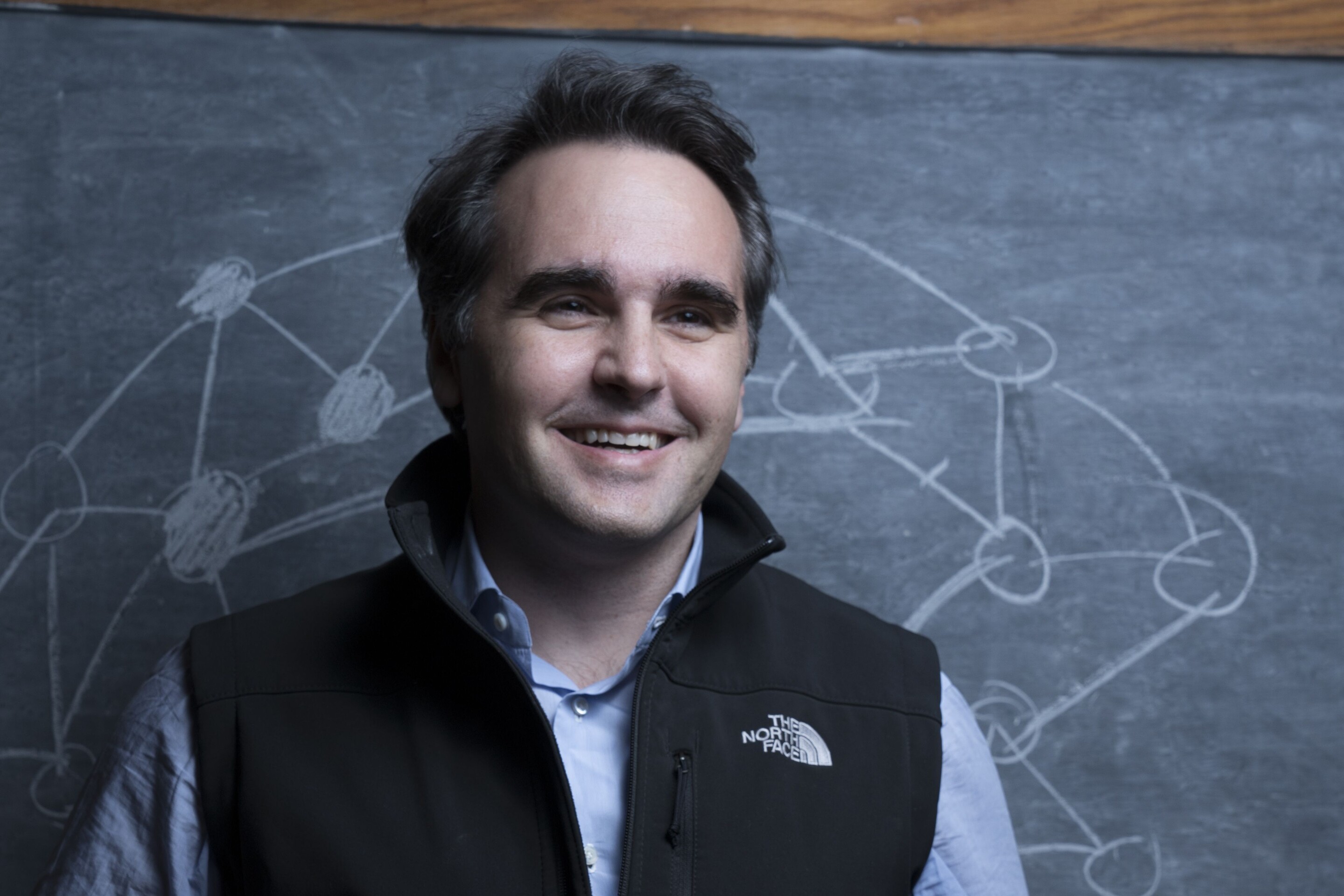
(From left) Doctoral student Hannah Yamagata, research assistant professor Kushol Gupta, and postdoctoral fellow Marshall Padilla holding 3D-printed models of nanoparticles.
(Image: Bella Ciervo)

When organizations turn a blind eye to sexual harassment in the workplace, how many people need to take a stand before the behavior is no longer seen as normal?
According to a new paper published in Science from Penn’s Damon Centola, there’s a quantifiable answer: roughly 25 percent of people need to take a stand before large-scale social change occurs. This idea of a social tipping point applies to standards in the workplace, and any type of movement or initiative.
Online, people develop norms about everything from what type of content is acceptable to post on social media to how civil or uncivil to be in their language. We have recently seen how public attitudes can and do shift on issues like gay marriage, gun laws, or race and gender equality, as well as what beliefs are or aren’t publicly acceptable to voice.
During the past 50 years, many studies of organizations and community change have attempted to identify the critical size needed for a tipping point, purely based on observation. These studies have speculated such tipping points can range anywhere between 10 to 40 percent.
The problem for scientists has been that real-world social dynamics are complicated, and it isn’t possible to replay history in precisely the same way to accurately measure how outcomes would have been different if an activist group had been larger or smaller. “What we were able to do in this study was to develop a theoretical model that would predict the size of the critical mass needed to shift group norms, and then test it experimentally,” says Centola, an associate professor in the Annenberg School for Communication.
Drawing on more than a decade of experimental work, Centola has developed an online method to test how large-scale social dynamics can be changed. In this study, coauthored by Joshua Becker, who earned his doctoral degree in May from Annenberg, as well as data scientists Devon Brackbill (a Penn alum) and Andrea Baronchelli, 10 groups of 20 participants each were given a financial incentive to agree on a linguistic norm. Once a norm had been established, a group of confederates—a coalition of activists that varied in size—then pushed for a change to the norm.
When a minority group pushing change was below 25 percent of the total group, its efforts failed. But when the committed minority reached 25 percent, there was an abrupt change in the group dynamic, and quickly a majority of the population adopted the new norm. In one trial, a single person accounted for the difference between success and failure.
The researchers also tested the strength of their results by increasing the payments people received for adhering to the prevailing norm. Despite Centola and his colleagues doubling and tripling the amount of money for sticking with an established behavior, a minority group could still overturn the group norm, the researchers found.
“When a community is close to a tipping point to cause large-scale social change, there’s no way they would know this,” says Centola, who also directs Annenberg’s Network Dynamics Group. “And if they’re just below a tipping point, their efforts will fail. But remarkably, just by adding one more person, and getting above the 25 percent tipping point, their efforts can have rapid success in changing the entire population’s opinion.
Acknowledging that real-life situations can be much more complicated, the authors’ model allows for the exact 25 percent tipping point number to change based on circumstances. Memory length is a key variable, and relates to how entrenched a belief or behavior is. For example, someone whose beliefs are based on hundreds of past interactions may be less influenced by one change agent; someone who considers only more recent interactions might be more easily swayed.
“Our findings present a stark contrast to centuries of thinking about social change in classical economics, in which economists typically think a majority of activists is needed to change a population’s norms,” Centola says. “The classical model, called ‘equilibrium stability analysis,’ would dictate that 51 percent or more is needed to initiate real social change. We found, both theoretically and experimentally, that a much smaller fraction of the population can effectively do this.”
Centola says he believes environments can be engineered to push people in pro-social directions, particularly in contexts such as in organizations, where people’s personal rewards are tied directly to their ability to coordinate on behaviors that their peers will find acceptable. He also suggests that this work has direct implications for online political activism, offering new insight into how the Chinese government’s use of pro-government propaganda on social networks like Weibo, for example, can effectively shift conversational norms away from negative stories that might foment social unrest.
While shifting people’s underlying beliefs can be challenging, Centola’s results offer new evidence that a committed minority can change which behaviors are seen as socially acceptable, potentially leading to pro-social outcomes such as reduced energy consumption, less sexual harassment in the workplace, and improved exercise habits. Conversely, it can also prompt large-scale anti-social behaviors such as internet trolling, internet bullying, and public outbursts of racism.
The implications for large-scale behavior change are the subject of Centola’s new book, How Behavior Spreads, published this month by Princeton University Press.
Damon Centola is an associate professor in the Annenberg School for Communication and the School of Engineering and Applied Sciences, where he is director of the Network Dynamics Group. Joshua Becker earned his doctoral degree in May from the Annenberg School for Communication.
Michele W. Berger , Julie Sloane

(From left) Doctoral student Hannah Yamagata, research assistant professor Kushol Gupta, and postdoctoral fellow Marshall Padilla holding 3D-printed models of nanoparticles.
(Image: Bella Ciervo)

Jin Liu, Penn’s newest economics faculty member, specializes in international trade.
nocred

nocred

nocred